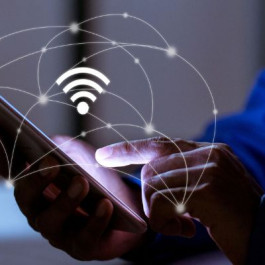
Cisco Advances Mobility Strategy With new Enterprise ‘Smart Solutions,’ Building on Service Provider Offerings and Enabling ‘Your Way’ Experiences
Cisco on Wednesday announced findings from the Cisco IBSG Horizons Study of 600 U.S. IT and business leaders that shows IT is accepting, and in some cases embracing, “bring your own device” (BYOD) as a reality in the enterprise. The study shows some of the quantifiable benefits and complexities associated with allowing employees to use their own mobile devices on their employers’ networks. Coinciding with the publication of the study, Cisco also highlighted “Smart Solutions” for the enterprise and opportunities for service providers to help customers, and end users, make the most of mobility experiences in the office, at home, or on-the-go.
More enterprises are embracing the bring-your-own-device (BYOD) trend, with executives seeing significant benefits in employee productivity and satisfaction while acknowledging the security and support issues for IT staffs, according to a new survey from Cisco Systems.
In its IBSG Horizon Study, released May 16, Cisco officials found that 95 percent of survey respondents said their organizations allow employee-owned devices in some form in the workplace, and that 76 percent said BYOD was somewhat or extremely positive for their companies and challenging for their IT departments.
In addition, the average number of connected devices per knowledge worker is expected to grow from 2.8 this year to 3.3 by 2014.
What’s more, the survey found that BYOD is just the gateway to greater business benefits. Over three-fourths (76%) of IT leaders surveyed categorized BYOD as somewhat or extremely positive for their companies, while seeing significant challenges for IT. These findings underscore that BYOD is here to stay, and managers are now acknowledging the need for a more holistic approach — one that is scalable and addresses mobility, security, virtualization and network policy management, in order to keep management costs in line while simultaneously providing optimal experiences where savings can be realized.
These research findings support Cisco’s assertion that mobility needs to extend well beyond BYOD to include the integration of service provider mobility, enterprise mobility, security, collaboration and desktop virtualization solutions.
Cisco’s ‘Smart Solutions’
Cisco’s answer to the opportunity and challenge is the Cisco Unified Workspace, which allows everything that makes workers efficient and productive to move with the employee. For example, instead of an employee just having voice while on the road, Cisco can also provide workers with location and presence capabilities.
Cisco is offering a set of what it calls “Smart Solutions” to help CIOs and IT leaders increase business efficiency and remove the cost and complexity associated with mobility. The solutions are built on a common technology framework and aim to help increase employee satisfaction and productivity by enabling personnel to “work their way,” helping ensure the business is highly secure and intellectual property is protected.
The portfolio includes the Cisco BYOD Smart Solution, VXI Smart Solution (a desktop virtualization system) and a Remote Expert Smart Solution to enable face-to-face consultation through video and online form sharing at work or in the home. But is this enough to give Cisco inroads in this realm of the mobility movement?
Key Survey Findings:
More IT and Business Leaders Saying Yes to BYOD
BYOD Does Bring Complexity: Security
IT Support and Desktop Virtualization on the Rise
More Note: Solving challenges and creating opportunities for optimal “your way” mobile experiences
Supporting Quotes:
Neil Sutton, Vice President Global Portfolio, BT Global Services
“Cisco’s findings tally well with the latest BT research, which found that 82% of companies across 11 countries allow their employees to bring their own devices to work (BYOD), or will do so within the next two years. This is why BT and Cisco are working together to address this aspect of the networked IT market covering networking, global Wi-Fi and security.”
John Lehner, President and Chief Executive Officer, Eagle Investment Systems
“At Eagle Investments Systems, we provide technology solutions to the global financial services industry across Asia Pacific, EMEA and the Americas and have a workforce of more than 600. The findings of the survey are not surprising to us: we believe it’s critical that our employees have exceptional mobile capabilities to do their jobs. On any given day, approximately 40% of our employees may be out of the office meeting with clients or conducting related business. They need optimal ways to collaborate from any environment. We feel applications like Cisco Jabber and Cisco WebEx, backed by a critical network infrastructure, provide that mobile flexibility to our workers and enable the kind of collaboration our employees require anytime, anywhere and on any device.”
Nancy Crouch, Deputy Chief Information Officer, Wake Forest University
“Wake Forest has consistently sought out innovative technological solutions, being among the first schools to give laptops to all of its students back in 1996. Now, we’re continuing that innovation as it pertains to mobility. Our students are very much on the go, especially as many travel frequently throughout the year as part of the ‘go there’ experience here at Wake Forest. We want students to be fully engaged even when they’re not on campus and find solutions like Cisco Jabber and Cisco WebEx provide that type of capability. They help connect our extended class community. These survey results highlight the changing face of mobility and we’re addressing that transition in a way that helps our students receive the best education possible.”
Padmasree Warrior, Senior Vice President and Chief Technology Officer, Cisco
“As the number of devices being brought into work increases, organizations need a comprehensive mobility strategy. By leveraging the intelligent network, organizations can now provide their employees with the benefits of working anywhere, anytime: in other words, “work your way.”
More Cisco News:
Cisco, Citrix Team up on Virtual Workspaces
Cisco to Update IP Phone Capabilities for Its Enterprise Users





